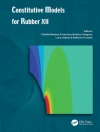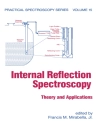This advanced textbook covering the fundamentals and industry applications of process intensification (PI) discusses both the theoretical and conceptual basis of the discipline. Since interdisciplinarity is a key feature of PI, the material contained in the book reaches far beyond the classical area of chemical engineering. Developments in other relevant disciplines, such as chemistry, catalysis, energy technology, applied physics, electronics and materials science, are extensively described and discussed, while maintaining a chemical engineering perspective.
Divided into three major parts, the first introduces the PI principles in detail and illustrates them using practical examples. The second part is entirely devoted to fundamental approaches of PI in four domains: spatial, thermodynamic, functional and temporal. The third and final part explores the methodology for applying fundamental PI approaches in practice. As well as detailing technologies, the book focuses on safety, energy and environmental issues, giving guidance on how to incorporate PI in plant design and operation — safely, efficiently and effectively.
Tabela de Conteúdo
Preface xi
About the Authors xiii
Part I Principles 1
1 Introduction 3
1.1 Short History of Process Intensification 3
1.2 Definitions and Interpretations of Process Intensification 5
1.3 Fundamentals of Process Intensification – Principles, Approaches, Domains, and Scales 8
References 11
2 The Four Principles 15
2.1 Principle 1 – Toward Perfect Reactions 15
2.2 Principle 2 – What Experience Molecules? 19
2.3 Principle 3 – Driving Forces, Resistances, and Interfaces 21
2.4 Principle 4 – About the Synergies 21
References 23
Part II Domains 25
3 STRUCTURE – PI Approaches in Spatial Domain 27
3.1 Randomness and Order: Why Structure? 27
3.2 Structures Targeting Molecular Events 29
3.2.1 Molecular Imprints 29
3.2.2 Molecular Reactors 33
3.2.3 Shape-Selective Catalysts 34
3.2.4 Semirigid Structures: Liquid Crystals 38
3.3 Structures Targeting Heat Transfer 39
3.3.1 Microstructured Reactors 39
3.3.2 Structured Heat Exchangers 46
3.4 Structures Targeting Mass Transfer 49
3.4.1 Microstructured Separation Systems 49
3.4.2 Structured Internals for Reactions and Separations 55
3.5 Structures Targeting Mixing and Fluid Flow 63
3.5.1 Micromixers 63
3.5.2 Static Mixers 67
3.5.3 Fractal Systems 71
References 73
4 ENERGY – PI Approaches in Thermodynamic Domain 83
4.1 Energy in Chemical Processes – A Broader Picture of the Present and the Future 83
4.2 Electric Fields 85
4.3 Magnetic Fields 90
4.4 Electromagnetic Fields 93
4.4.1 Microwaves 93
4.4.1.1 Liquid-Phase Organic Synthesis Reactions 97
4.4.1.2 Gas-Phase Catalytic Reactions 99
4.4.1.3 Solid–Liquid Extraction 99
4.4.1.4 Adsorbents Regeneration 102
4.4.1.5 Crystallization 103
4.4.1.6 Distillation 103
4.4.1.7 Membrane Processes 104
4.4.2 Plasmas 104
4.4.2.1 Plasma-Assisted Methane Coupling to Acetylene (Huels Process) 106
4.4.2.2 Plasma-Assisted Coal Gasification for Synthesis Gas Production 108
4.4.2.3 Plasma-Assisted CO2 Dissociation 109
4.4.3 Photochemical and Photocatalytic Reactors (Artificial Light) 111
4.4.4 Solar Reactors 118
4.4.5 Induction Heating 126
4.5 Acoustic Fields 129
4.6 Flow Fields 142
4.6.1 Hydrodynamic Cavitation 142
4.6.2 Ejector-based Liquid Jet Reactors 144
4.6.3 Supersonic Flow 147
4.6.4 Impinging-stream Reactors 150
4.7 High-Gravity and High-Shear Fields 152
4.7.1 Rotating Packed Beds 154
4.7.2 Spinning Disc Reactors 158
4.7.3 Rotor–Stator Devices 160
4.7.4 Process Intensification by Solids Moving in Centrifugal Fields 165
4.7.5 High Gravity Fields in Microprocessing Systems 167
References 169
5 SYNERGY – PI Approaches in Functional Domain 197
5.1 Combining Functions 197
5.2 Synergies at Molecular Scale 199
5.2.1 Multifunctional Catalysts 199
5.2.2 Synergistic Use of Alternative Energy Forms 202
5.3 Synergies in Processing Units – Multifunctional Equipment and Integrated Operations 205
5.3.1 Integrating Catalysis and Mixing –The Monolithic Stirrer Concept 205
5.3.2 Integrating Mixing and Heat Exchange – Static Mixer Reactors and Heat Exchangers 205
5.3.3 Heat Exchangers as Chemical Reactors 208
5.3.4 Heat Pumping in Distillation Systems 209
5.3.5 Integrating Reactions and Separation – Reactive Separations 211
5.3.5.1 Reactive Distillation 211
5.3.5.2 Membranes in Chemical Reactors 213
5.3.5.3 Reactive Adsorption 215
5.3.5.4 Reactive Extraction 222
5.3.5.5 Reactive Crystallization 223
5.3.5.6 Reactive Absorption 226
5.3.6 Reactive Comminution 227
5.3.7 Handling Chemical Reactions in Highly Viscous Media – Reactive Extrusion 234
5.3.8 Integrating Separation Techniques – Hybrid Separations 235
5.3.8.1 Extractive Distillation 235
5.3.8.2 Adsorptive Distillation 237
5.3.8.3 Membrane Distillation 238
5.3.8.4 Membrane Crystallization 240
5.3.8.5 Extractive Crystallization 241
5.3.8.6 Membrane Absorption/Stripping 242
5.3.8.7 Membrane Chromatography (Adsorptive Membranes) 245
5.3.8.8 Membrane Extraction 246
References 247
6 TIME – PI Approaches in Temporal Domain 257
6.1 Oscillatory Flow Reactors 258
6.2 Reverse Flow Reactors 262
6.3 Periodic Operation of Trickle Bed Reactors 269
6.4 Cyclic Distillation 271
6.5 Pulse Combustion 275
6.6 Pressure Swing Adsorption 284
6.7 Desorptive Cooling 286
6.8 Variable Volume Operation of Stirred Tank Reactors 288
6.9 Short Contact Time Reactors 290
6.9.1 Catalytic Partial Oxidation of Alkanes 291
6.9.2 Catalytic Partial Oxidation of Cellulose 293
References 296
Part III Fundamentals in Practice – Designing a Sustainable, Intensified Process 299
7 Process Intensification and Sustainable Processing 301
7.1 Introduction 301
7.1.1 Sustainable Earth? 301
7.1.2 Sustainable Processing and the Position of PI 302
7.1.3 Sustainability Assessment Tools Applied to Process Intensification 303
7.2 Ecological Assessment of Intensified Technologies 312
7.2.1 Microreactor Engineering 313
7.2.2 Other Intensified Processes 316
7.3 Process Intensification and Inherent Safety 317
References 322
8 How to Design a Sustainable Intensified Process? 331
8.1 Conceptual Process Intensification Design 331
8.2 Case Study of Bhopal 332
References 339
Index 341
Sobre o autor
Andrzej Stankiewicz is Full Professor and Chair of Process Intensification at Delft University of Technology, the Netherlands, and Director of TU Delft Process Technology Institute. With almost 40 years of industrial and academic research experience he is author of numerous scientific publications on process intensification, chemical reaction engineering and industrial catalysis. Prof. Stankiewicz is one of the pioneers of process intensification.
He is also editor of Chemical Engineering and Processing: Process Intensification and Series Editor of the Green Chemistry Books Series and chairs currently the Board of the European Process Intensification Centre (EUROPIC).
Current research interests of Prof. Stankiewicz focus on control of molecular interactions and intensification of chemical reactions using electricity-based energy fields (e.g. laser, microwave, UV). The research in that area has brought him prestigious Advanced Investigator Grant from the European Research Council and (with co-workers) another grant from the Bill and Melinda Gates Foundation.
Tom Van Gerven is Professor of Process Intensification at the University of Leuven, Belgium and head of the Process Engineering for Sustainable Systems section in that University. He is author of numerous publications on process intensification, solid waste treatment and sustainable processing. He focuses on the use of ultrasound and light for efficient chemical processing. Since 2013, he is chairman of the Working Party on Process Intensification at the European Federation of Chemical Engineering.
Georgios Stefanidis is Professor at the Univeristy of Leuven, Belgium. His research interests are process intensification, chemical processing, chemical reactor engineering, biomass gasification, reforming of hydrocarbons and oxygenated fuels, CO2 utilization and crystallization.












